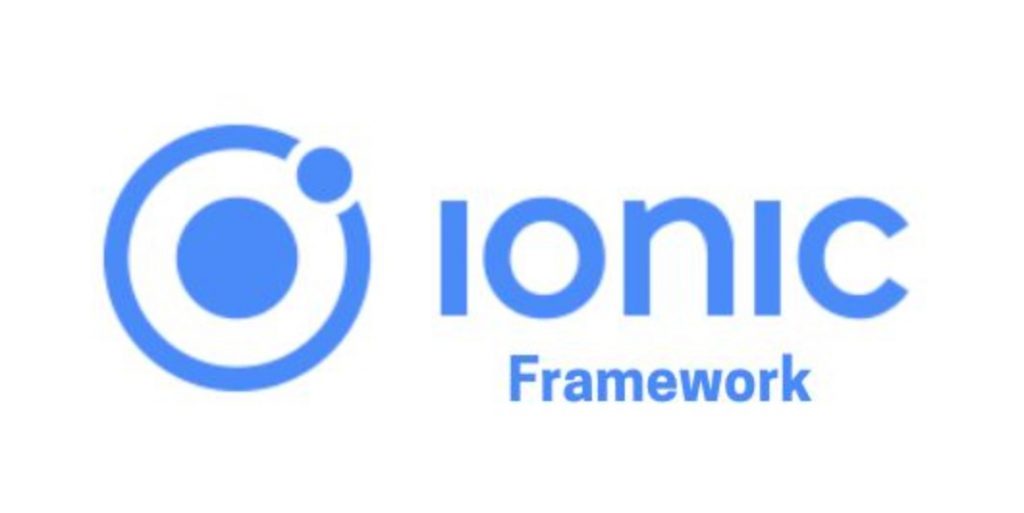The foundation for hybrid application development consists of platforms such as Ionic and Flutter. Positioned within the evolving landscape of cross-platform development, the comparison attempts to elucidate each framework’s inherent strengths and weaknesses. The discourse traverses through technical functionalities, dissecting performance metrics and user experiences in the empirical evaluation of Ionic vs. Flutter. An examination of advantages and disadvantages is undertaken, accentuating crucial factors, including code maintainability, sustainability, and knowledge prerequisites.
- Explore Ionic and Flutter strengths for informed app development.
- Delve into code, performance, and sustainability nuances.
- Navigate the dynamic landscape with informed cross-platform choices.
Overview Flutter Architecture
Flutter, the brainchild of Google, is redefining mobile app development in the ongoing battle between Ionic and Flutter. Unlike its counterparts, Flutter frees you from having to master separate languages – Dark, Kawa, Clojure or Kotlin, take your pick. Juggling Java and Swift is unnecessary, Flutter simplifies that path. Unlike Flutter vs. ionic competitors, performance is Flutter’s beacon due to the unique architecture that sets it apart from ionic. Helps accelerate application development for skilled Flutter developers.

Advantages of Flutter
In the high-stakes arena of the Ion vs. Flutter technology battle, Flutter emerges victorious with a powerful arsenal. With a dynamic 2D rendering engine and a React-inspired framework, Flutter promises a great cross-platform journey, taking the competition between Flutter and Іonic to a higher level.
Flutter’s toolkit is impressive, with a rich widget library that follows Android’s material design guidelines, changing the landscape of comparing ionic Flutter to ionic. Its showstopper, hot reload, orchestrates changes in real-time without disturbing the app’s state, a defining feature in the ongoing Flutter vs. Ionic flutter saga.
The seamless connection to the backend, whether Java for Android or C/Swift for iOS, paints a vivid picture of harmony when comparing ionic flutter and flutter. Flutter’s fast, time-saving iteration cycles provide quality assurance, strengthening its position in the debate between Flutter and Ionic technologies.
Disadvantages of Flutter
Every hero has their Achilles heel, and in the ongoing saga of Ionic vs. Flutter, Flutter has his own set of problems.
Compared to Ionic, Flutter’s toolkit may seem a bit poorer, and it lacks the richness of its brother. In the vast competitive landscape between Flutter and Ionic, Flutter struggles with a lack of community-built tools and libraries, which slows the pace of collaborative innovation.
Flutter’s path is slowed by compatibility with Android Auto, watchOS, Carplay, or tvOS, among others, which starkly contrasts with Ionic Flutter. The stumbling block remains that updates face a bottleneck requiring a traditional release procedure, which is an obstacle to a smooth transition from Flutter to the Ionic narrative.
Overview of Ionic Frameworк
Meet Ionic is a versatile open-source SDK that combines the worlds of conventional web development and native mobile apps in the ongoing saga of Ionic vs. Flutter. Powered by HTML5, CSS3, and JavaScript, Ionic builds powerful and beautiful apps. Unlike its competitors in the Flutter vs. Ionic debate, Ionic stays true to its web roots by leveraging the power of Angular for a flexible architecture. The web’s ease of use and power define the contours of the dynamic landscape of the ionic flutter comparison. Enter the realm of Ionic, where simplicity meets powerful performance in the Flutter vs. Ionic.

Advantages of Ionic
Ionic is a platform-agnostic framework, which is a notable advantage when considering Ionic vs Flutter. This characteristic greatly simplifies the time, cost, and labor-intensive aspects inherent in cross-platform projects while providing native aesthetics and functionality.
In consonance with Angular and going beyond its own framework, Ionic demonstrates a decent range of compatibility spanning frameworks such as React and Vue. This technical adaptability justifies Ionic’s role in a thorough analysis of flutter vs ionic.
Working as a solution for programmers, Ionic allows familiar JavaScript frameworks and libraries to be used to create a unified codebase. This strategic approach minimizes the need to rewrite code, an important consideration when systematically exploring the comparative landscape of ionic flutter.
Disadvantages of Ionic
As we explore the intricacies of Ionic vs Flutter, we take a close look at the shortcomings of ionic. Despite the abundance of plugins, customization requirements put app developers at a disadvantage, requiring complex feature construction.
Significant differences in optimization arise between Android and iOS, which is paramount when carefully evaluating Flutter vs. Ionic. Notably, Ionic is not suitable for game development, further emphasizing the limitations of its domain in the current comparison of Ionic vs. Flutter.
These insights into Ionic’s limitations contribute to a more nuanced understanding of the dynamic landscape of Flutter vs. Ionic, guiding developers to make informed decisions at the crossroads of cross-platform development.
Are you trying to decide between Ionic and Flutter? Ficus Technologies can help you optimize your cross-platform development process.
Contact UsSimilarities Between Flutter and Ionic
Identifying the common goals of Flutter and Ionic reveals noteworthy parallels within the discussion. Both frameworks focus on developing UI frameworks for native platforms, a commonality that is critical in the current Flutter vs. Ionic evaluation.
In addition, flutter and ionic converge in their commitment to creating high-performance interactive applications, a common theme in the dynamic comparative landscape of ionic flutter. The underlying principle that binds these frameworks together is the cross-platform development paradigm, a shared vision that guides developers in making strategic decisions based on Flutter vs Ionic.
Flutter is the language that lets developers speak the universal dialect of beautiful, performant applications.
Alex Devsmith
Comparison Between Flutter and Ionic
Deciding on the crucial debate between ionic and flutter requires a keen understanding of the technicalities and differences. The upcoming Flutter vs. Ionic comparison scrutinizes the intricacies of each framework, helping you make an informed choice in the dynamic landscape of cross-platform development.
Code Portability
In the realm of Ionic vs. Flutter, the battle for code portability is unfolding. Flutter, with its huge number of features, faces limitations in compatibility with web browsers. Conversely, Ionic, based on web standards, is proving to be a versatile contender, facilitating the creation of exceptional web, desktop, and mobile applications. The ionic flutter comparison emphasizes Ionic’s advantage in flexibility, seamlessly transitioning between mobile and web applications. While Flutter outperforms it in some aspects, the cross-platform development landscape leans in Ionic’s favor for those seeking comprehensive code portability across platforms in the ongoing Flutter vs Ionic study.
Performance
When carefully evaluating the performance of Ionic and Flutter, the effectiveness of each framework becomes paramount to optimizing the project. Flutter, characterized by its animation capabilities, proves advantageous in scenarios where dynamic visual interaction is a priority. Conversely, Ionic proves to be a favorable choice for creating client-centric applications, offering decent results in this area of Ionic vs. Flutter comparison.
The most important parameter affecting the efficiency of application delivery is the package size. Ionic’s utilization of conventional browser runtime and primitives contributes to the overall compact size of the application, which affects the dynamics of Internet delivery—a crucial factor in the scientific study of ionic flutter comparative performance.
Sustainability
Sustainability, in the context of project durability and adaptability, is a critical aspect in the scientific analysis of Ionic and Flutter. Ionic, which demonstrates a higher degree of project suitability, is preferred in terms of durability. Developers who are proficient in JavaScript, CSS, and HTML find their skills to be durable, which increases the adaptability of the project.
On the contrary, Flutter, which is still on its development path, has its limitations. Applications that do not use Flutter may not have access to Flutter’s emerging capabilities, which affects resilience. In this area of comparison between Flutter and Ionic, Ionic asserts its primacy, epitomizing sustainable flexibility and project longevity at the complex intersection of cross-platform development.
Knowledge and Skill Set
When scientifically distinguishing the knowledge and skill requirements for ionic and flutter, a key distinction emerges. Flutter, based on Dart, requires developers to be proficient in that language. Dart, encapsulated in a self-sufficient ecosystem, presents unique subtleties and constraints, which makes it necessary to scrutinize the market viability of a Dart developer within the Ionic vs. Flutter spectrum.
Ionic, in contrast, operates within the JavaScript framework, necessitating expertise in this language. This scientific exploration underscores the criticality of language proficiency as a determining factor in the strategic choice between Flutter and Ionic in the intricate landscape of cross-platform development and the ongoing discourse of ionic flutter comparison.
Code Maintainability
In the controversy between Ionic and Flutter, ease of code maintenance is crucial. While Ionic boasts a strong community, it faces code maintenance issues, while Flutter is becoming the paradigm of ease of maintenance. Flutter’s code clarity makes it easy to identify issues, localize tools, and easily integrate third-party libraries. The stateful hot reboot feature allows for quick troubleshooting, extending maintenance capabilities.
Ionic developers, on the other hand, face constant code modifications to ensure application reliability, which creates significant code maintenance challenges. As a result of the analytical study, Flutter emerged as the unequivocal winner in the Ionic vs. Flutter debate and at the difficult crossroads of cross-platform development.
User Experience
In the Ionic vs. Flutter debate, one of the most important points becomes the user experience. Flutter, with its optimized tools, components, and customizable widgets, creates an immersive user experience, offering unprecedented UI flexibility in the Ionic vs. Flutter debate.
Ionic, on the other hand, excels at creating native, persistent, and transient UI navigation for both iOS and Android apps. The provision of a rich, seamless in-app experience distinguishes Ionic. Notably, its innovative approach eliminates the necessity for users to download APKs regularly for updates, contributing to a seamless user experience in the ongoing ionic flutter comparison exploration.
Final remarks
In conclusion, the Ionic vs. Flutter study provided a detailed analysis of cross-platform application development. A thorough analysis of technical specifications, performance metrics, and user experience sheds light on the distinctive features of each framework. A constant comparison of the intricacies of Flutter vs. Ionic serves as a benchmark, emphasizing important aspects such as code usability, sustainability, and required knowledge. By being at the complex intersection of these technologies, developers are empowered to make informed decisions in the dynamic tapestry of cross-platform development.
Ficus Technologies is here to offer you customized solutions and optimal performance in your application development endeavors. Whether you are leaning towards Ionic or Flutter, our experience ensures easy integration and successful progression through the ever-changing landscape of Ionic vs. Flutter technologies.
Choosing between Flutter and Ionic depends on specific project needs. Flutter, with its 2D rendering engine and hot reload feature, excels in performance, making it suitable for dynamic applications. However, limited community support and platform compatibility challenges may impact some projects. Ionic, known for its platform-agnostic efficiency and unified codebase, offers a balance between performance and versatility that is ideal for small businesses. For high-performance applications with a focus on animations, Flutter may be preferable. For broader compatibility and a familiar web-centric approach, Ionic is a reliable choice. Consider project priorities, community support, and long-term sustainability when making the decision.
Yes, both Ionic and Flutter are cross-platform development frameworks, enabling developers to create applications that run seamlessly on multiple platforms, including iOS, Android, and the web. Ionic leverages web technologies like HTML, CSS, and JavaScript, providing platform-agnostic efficiency and compatibility with various frameworks. Flutter, on the other hand, uses Dart and offers a unique 2D rendering engine for high-performance applications across platforms. Each framework has its strengths, with Ionic excelling in code portability and Flutter emphasizing performance. Choosing between them depends on project requirements, preferred languages, and the desired balance between versatility and performance.








